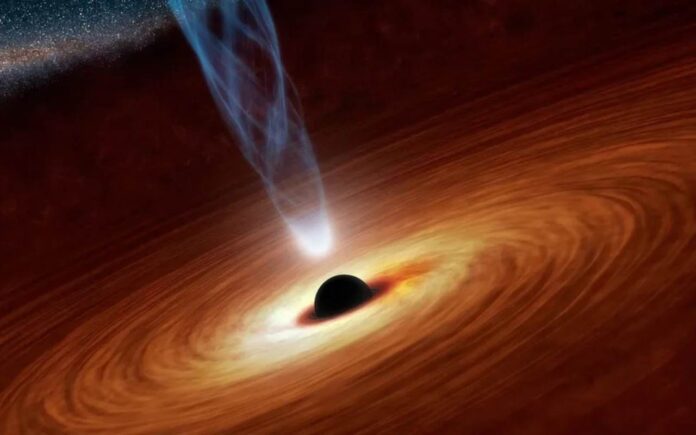The James Webb Space Telescope (JWST) may have caught supermassive black holes in the act of preventing star formation in their huge host galaxies.
Some of the largest galaxies in the local universe appear to be in a “quiescent” condition, with no recent evidence of star formation. Quenching is a phenomenon in which clouds of gas that would form new stars are disrupted in some way, leading astronomers to speculate that supermassive black holes at the centres of many galaxies may be to blame. However, because this procedure occurred so long ago, capturing it on film has been challenging.
Two independent teams of astronomers have used JWST to look back in time more than 10 billion years and have seen streams of gas spilling out of galaxies containing supermassive black holes. “I would say it’s the first direct evidence that supermassive black holes can actually remove the gas in a way that turns off the galaxy,” says Sirio Belli of the University of Bologna in Italy.
Belli and his colleagues focused JWST’s spectroscope on the gas escaping the galaxy COSMOS-11142, which had only recently stopped producing new stars. They saw ionised gas at high temperatures as well as neutral gas at low temperatures, both of which are difficult to detect with telescopes on Earth.
With the neutral gas, we can observe that there is a significant amount of mass leaving the galaxy, as Belli explains. Since gas is the driving force behind star formation, “it is very natural to conclude that this wind is then turning off the galaxy.”
GS-10578, a galaxy from roughly 11 billion years ago, was detected by Francesco D’Eugenio and his colleagues at the University of Cambridge. Star formation rates were measured with a spectroscope other than JWST, leading to the conclusion that the galaxy stopped producing new stars within the last few tens of millions of years.
The neutral gas being expelled from the galaxy was also measured, and its mass was determined to be on par with the mass of gas needed to create new stars. “This means that these outflows can efficiently compete with star formation for using up the gas,” explains D’Eugenio.
Both of these discoveries, according to Omar Almaini of the University of Nottingham in the UK, give strong evidence that a black hole can inhibit star formation in its galaxy, though they are not conclusive and other mechanisms may be at play. It’s possible that the black hole is simply coincidentally active at this pivotal moment in the galaxy’s evolution.
Even if a black hole is inhibiting star formation, it may not be through physically eliminating the gas but rather by causing turbulence in the gas pools, as suggested by Almaini. To establish a conclusion, he argues, many more observations of a wider sample of galaxies are required. “It will take a lot of detective work to piece together different lines of evidence that all point to the same thing.”
References:
Massive and Multiphase Gas Outflow in a Quenching Galaxy at z=2.445, arXiv:2308.05795
A fast-rotator post-starburst galaxy quenched by supermassive black-hole feedback at z=3, arXiv:2308.06317
